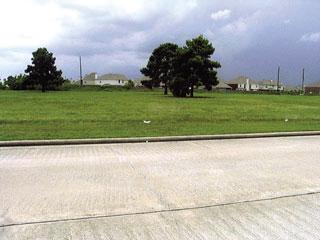
Open space reduces highway traffic noise levels by increasing the distance between the noise source and the noise sensitive activity. An open space method of noise reduction can be used in combination with commercial/ industrial, residential, or construction mitigation strategies to reduce impacts from highway traffic noise.
Planners, decision makers, and community stakeholders should think innovatively about open space and look for ways to put it to productive use. Examples of successful uses include walking trails, bike paths, and other leisure options. Planners and designers should take advantage of natural features, such as “rolling hills”—or should feel free to create such effects. Adding vegetation to the open space strategy can dramatically increase its attractiveness. For example, trees planted intermittently can provide shade for recreational activities and give a linear park appearance.